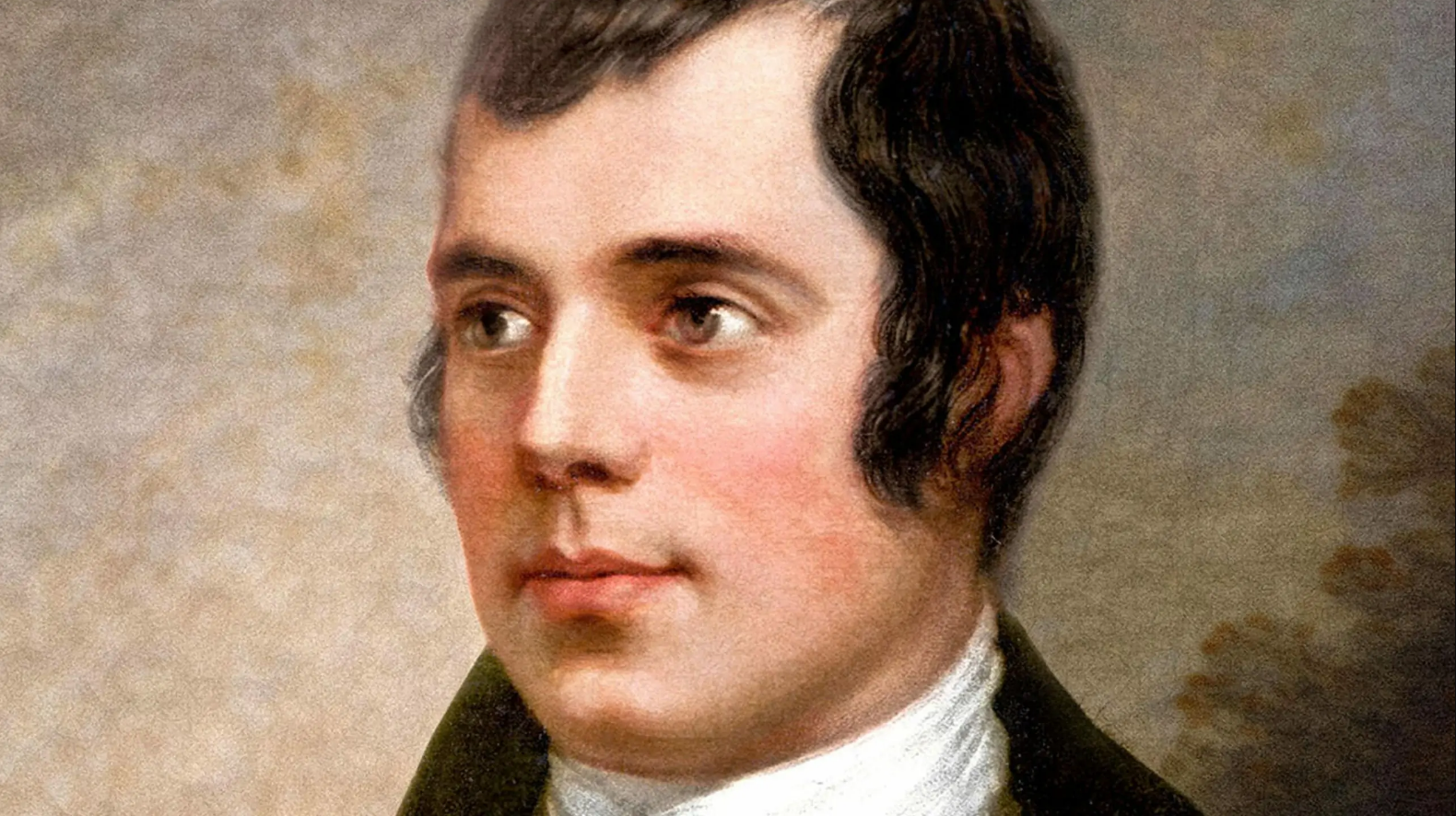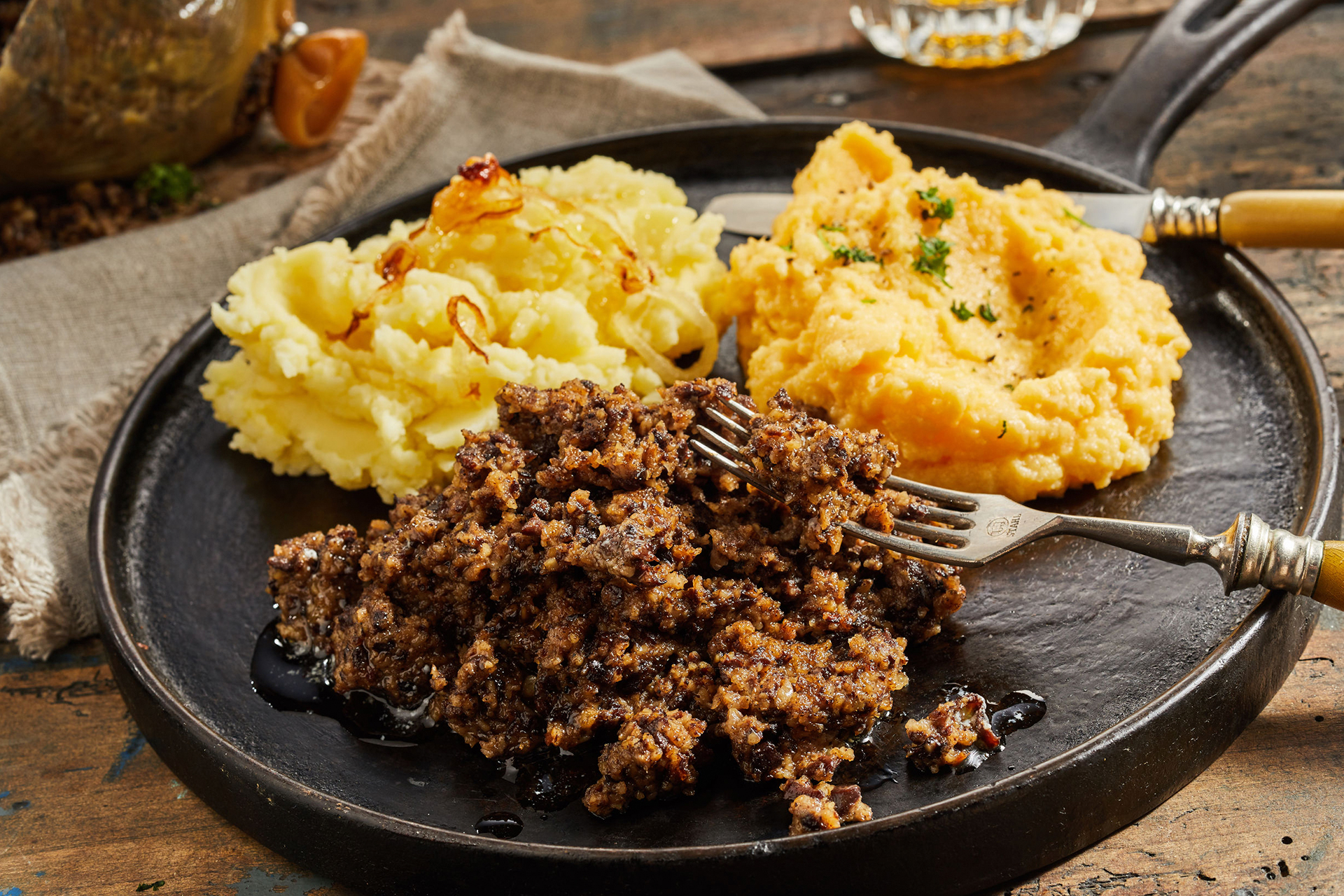Burns Supper Explained - Traditions, Menu, & How To Celebrate
Burns Supper is a Scottish tradition filled with food, poetry, and toasts. Learn how to bring this celebration to life in your own home.
Author:Maya ReyesReviewer:Liam JonesOct 29, 20241K Shares104.7K Views

Friends and families gather each January 25th to celebrate Burns Supper, a beloved Burns Night tradition that honors Scotland’s national poet, Robert Burns.
Known for his vivid depictions of Scottish life and his championing of social justice, Burns remains a symbol of Scottish pride. Burns Supper is a tribute to his life, work, and lasting influence on culture.
From reciting Burns’ verse to savoring traditional dishes like haggis, neeps, and tatties, Burns Supper embodies the spirit of Burns’ works, uniting people worldwide in a night of culture and camaraderie.
Who Was Robert Burns?
A Poet For The People
Robert Burns, born January 25, 1759, in Ayrshire, Scotland, is celebrated as Scotland’s National Bard. Known for his compassionate and witty observations, Burns wrote about equality, love, and the struggles of ordinary people.
His works, like Auld Lang Syneand To a Mouse, resonate worldwide, and his dedication to social justice lives on through his poetry and influence on Scottish identity.
“„Man’s inhumanity to man makes countless thousands mourn,” he wrote, capturing the essence of his empathy and vision for a fairer world.
Burns’ Lasting Legacy
Burns’ talent for capturing the joys and sorrows of everyday life endears him to readers even today. His influence extends globally, as his ideals continue to resonate with people of all backgrounds. Burns Suppers celebrate not only his poetry but the enduring values he championed.
The Origins And Historical Significance Of Burns Supper
The First Burns Supper
The first Burns Supper took place on July 21, 1801, at Burns’ birthplace in Alloway, organized by his friends to commemorate the fifth anniversary of his passing.
Spearheaded by John Ballantine and hosted by Reverend Hamilton Paul, this gathering was a success, with attendees enjoying haggis, reciting Burns’ poetry, and paying tribute to their late friend.
Inspired by this evening, they held another supper in January 1802, celebrating Burns’ birthday—a tradition that endures over 200 years later.
Burns Clubs And Global Reach
As Scotland transitioned from rural life to urban centers in the 19th century, Burns Supper became a unifying event. Burns Clubs began to form, starting in Greenock and Paisley, to promote Scottish identity and self-worth amid changing societal values.
The Burns Federation, established in 1885, unified Burns Clubs worldwide, fostering a tradition that spread through the Scottish diaspora to cities like London, Oxford, and New York, and far-reaching places like New Zealand and Japan.
The Traditional Program Structure Of Burns Supper
Piping In The Guests And Haggis
A Burns Supper traditionally begins with the ceremonial “piping in” of the guests, with a bagpiper playing classic Scottish tunes. This sets the mood, filling the room with the distinct sounds of Scotland. Once guests are seated, the host welcomes everyone and introduces the evening.
The Program Flow: A Step-by-Step Guide
Host’s Welcoming Speech
The host opens with a few words about Burns, the importance of the supper, and what attendees can expect.
Selkirk Grace
The evening’s first ritual, the Selkirk Grace, often attributed to Burns, is recited:
“Some hae meat and canna eat,
And some wad eat that want it;
But we hae meat, and we can eat,
And sae the Lord be thankit.”
Soup Course
A traditional Scottish soup, such as Scotch brothor cullen skink, is served to warm guests and prepare them for the meal.
Address to a Haggis
The haggis, centerpiece of the meal, is ceremonially brought in with the sound of bagpipes. As the host recites Address to a Haggis, they theatrically slice open the dish, delighting guests with Burns’ humor and respect for Scottish traditions.
Main Course
Haggis is served with neeps (mashed turnips) and tatties (mashed potatoes).
Immortal Memory Toast
A main toast, the Immortal Memory, is a heartfelt tribute reflecting on Burns’ life and impact, blending humor and respect. The toast ends with a raise to his “immortal memory.”
Toast to the Lassies and Reply from the Laddies
These lighthearted toasts bring humor to the evening. The Toast to the Lassies is a playful tribute to women, often followed by a witty Reply from the Laddies, making for an entertaining exchange.
Closing The Supper With “Auld Lang Syne”
To end the evening, guests stand, cross arms, and sing Auld Lang Syne, Burns’ famous song celebrating friendship and unity—a fitting finale to a night honoring his legacy.
Food And Drink: Traditional Burns Supper Menu
Haggis: The Great Chieftain O’ The Puddin’-Race
Haggis, a Scottish staple, is traditionally made from sheep’s heart, liver, and lungs mixed with oatmeal, suet, and spices, creating a rich and savory flavor. Burns’ praise of haggis as the “great chieftain o’ the puddin’-race” has cemented its role in Burns Supper.
Vegetarian haggis, made from lentils and vegetables, allows everyone to participate.
Neeps, Tatties, And More
Neeps and tattiesbalance the flavors of haggis, while starters like Scotch brothor cullen skink provide a hearty beginning to the meal. Desserts such as cranachan(whipped cream, whisky, honey, and raspberries) and clootie dumplings(a pudding with dried fruit and spices) round out the menu.
The Role Of Whisky In Burns Supper
Each toast is accompanied by a dram of whisky, with types varying from peaty Islay malts to smooth Speyside whiskies. Whisky deepens the flavor experience of the supper and reflects Scottish pride, making each sip an act of tradition and unity.
Key Toasts And Readings At Burns Supper
Address To A Haggis
Address to a Haggisis a humorous, spirited recitation celebrating the dish as a symbol of Scottish resilience. As the host recites lines like “Fair fa’ your honest, sonsie face,” they theatrically slice the haggis open, delighting guests.
Popular Recitations
Throughout the evening, guests often perform additional works by Burns, like:
- “Tam o’ Shanter”: A thrilling tale of adventure and the supernatural.
- “To a Mouse”: Burns’ reflection on the fragility of life.
- “Ae Fond Kiss”: A heartfelt farewell in verse.
The Immortal Memory
The Immortal Memory is the main tribute to Burns, often addressing his ideals of social justice, equality, and compassion. It’s an opportunity for reflection, honoring Burns and connecting his work to today’s world.
Toast To The Lassies And Reply From The Laddies
Originally to thank the women who prepared the supper, the Toast to the Lassies has evolved into a lighthearted acknowledgment of women’s contributions, while the Reply from the Laddies brings humor and camaraderie.
Modern Burns Supper Variations Around The World
Global Celebrations Of Burns Supper
As Scots migrated globally, they brought Burns Supper with them, blending it with local flavors. In Canada, seafood might be added to the menu, while New Zealand Burns Suppers may include Maori cultural elements.
Modern Adaptations
Modern Burns Suppers often accommodate dietary preferences, offering vegetarian haggis and incorporating multimedia elements to celebrate Burns in innovative ways.
Hosting Your Own Burns Supper
Planning Essentials
Set a timeline, assign roles for toasts and recitations, and create a simple program. Planning ensures a smooth, memorable evening for all.
Creating The Right Atmosphere
Decorate with tartan patterns, Scottish flags, or thistle flowers, and play Scottish folk music or bagpipe playlists from Spotify for an authentic touch.
Family-Friendly Ideas
Burns Supper can be family-friendly by including kid-friendly foods and games like a haggis huntor simplified toasts that young guests can join.
Interactive Activities And Games
- Burns Night Quiz: Test guests’ knowledge of Burns and offer a prize for the winner.
- Haggis Hunt: Hide a faux haggis for guests to find, adding a playful touch.
- Ceilidh Dance and Music Jam: Invite guests to join in a ceilidh or music jam session.
Top Tips For The Perfect Toast
Tips For Engaging Delivery
Toasts should be lively and engaging. Keep them brief, use humor, and make eye contact to connect with the audience.
Adding Personal Touches
Adding a personal connection to Burns’ ideals makes each toast memorable. A sample toast:
“To our friends here, and to Burns, whose words live on. May we always keep his spirit close and his ideals strong!”
Fun Facts About Burns Supper
- The First Burns Club: Greenock, 1801, founded by Burns’ friends.
- Global Celebrations: Dumfries hosts one of the largest annual Burns Suppers.
- Worldwide Influence: Over 250 Burns Clubs exist worldwide, celebrating Burns’ work across continents.
Burns Supper: Did You Know?
- “Auld Lang Syne” is sung worldwide, making Burns a global cultural icon.
- The Burns Federation, formed in 1885, unites Burns enthusiasts globally, promoting his legacy and the annual suppers.
FAQs About Burns Supper
Why Is Haggis Central To Burns Supper?
Haggis represents Scottish pride and tradition, celebrated in Burns’ poetry as the centerpiece of Burns Supper.
What Is The Immortal Memory Toast?
The Immortal Memory toast is a tribute to Burns’ life and values, linking his ideals to contemporary themes.
Can Burns Supper Be Vegetarian?
Yes, vegetarian or vegan haggis is common, making the meal accessible to everyone.
Where To Find Traditional Ingredients?
For an authentic Burns Supper, order haggis from Scottish import retailers or substitute lamb sausage if necessary. Scottish whiskies are often available at local stores or online.
Conclusion
As guests join hands to sing Auld Lang Syneat the close of Burns Supper, they become part of a centuries-old tradition that transcends borders. This celebration brings people together to share a meal, honor a poet, and relive timeless values of friendship and kinship.
Hosting or attending a Burns Supper allows us not only to appreciate Burns’ literary contributions but to experience a piece of Scottish culture that has touched lives around the world. Embrace the spirit of the evening with food, poetry, and camaraderie-just as Robert Burns would have wanted.
Jump to
Who Was Robert Burns?
The Origins And Historical Significance Of Burns Supper
The Traditional Program Structure Of Burns Supper
Food And Drink: Traditional Burns Supper Menu
Key Toasts And Readings At Burns Supper
Modern Burns Supper Variations Around The World
Hosting Your Own Burns Supper
Top Tips For The Perfect Toast
Fun Facts About Burns Supper
Burns Supper: Did You Know?
FAQs About Burns Supper
Conclusion

Maya Reyes
Author
Maya Reyes’s wanderlust was sparked in the temples of Luang Prabang, where the scent of lemongrass and the chants of monks revealed the transformative power of travel.
Since then, her journey has been defined by cultural immersion and authentic connections. From learning batik in Indonesia to sharing meals with nomadic families in Mongolia, Maya seeks experiences that highlight the human stories behind each destination.
Travel for her is a way to weave her narrative into the world’s cultural tapestry, creating bridges across diverse ways of life. Maya has traveled to 15 countries and shares her insights through writing and storytelling.

Liam Jones
Reviewer
Liam Jones has made it his mission to prove that adventure doesn’t need a hefty budget. Having traveled to over 40 countries, he specializes in finding affordable ways to experience the world, from the best street food in Bangkok to hidden gems in Lisbon.
Liam’s travel tips have reached thousands of readers, empowering them to see the world on a shoestring budget without sacrificing quality. With a deep passion for local cultures, he continues to share his travel hacks, ensuring adventure remains accessible to all.
Latest Articles
Popular Articles



